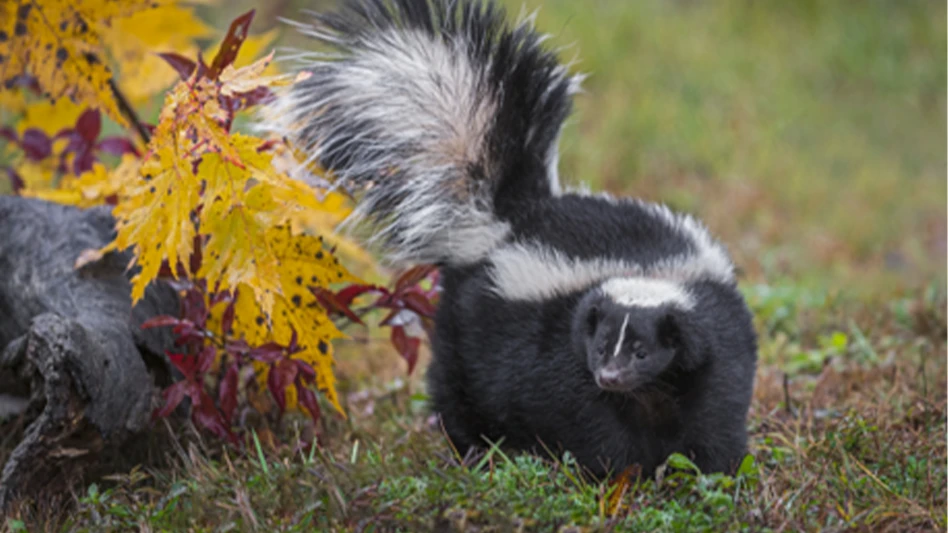Monitoring to ensure tolerances and target levels are being met is a critical component of food industry quality control programs. Pest management is a component of quality control programs and monitoring of pest populations is needed to ensure program effectiveness, but is often not used to its full potential.
If the sanitation/pest management program simply documents the procedures performed, but does not document pest populations, then we are only getting part of the story and limiting our ability to optimally manage pest populations.
Effective pest management programs are an information-intensive process, and professionals in the food and pest management industries need to have multiple high-quality sources of information from which to evaluate and optimize programs. As a scientist, I am biased by training and inclination to want conclusions to be supported by data, but all involved in pest management should want results of a pest management program to be well documented and this information used to determine the selection and targeting of management tactics. While the process is challenging and does have a cost, there is also considerable potential for cost savings through more efficient programs and improved product quality.
Pest management programs for the food industry need to be focused on prevention, including preventing pests from entering facilities; eliminating newly established infestations as soon as possible; and, if pests are present within a facility, maintaining levels where the potential for product infestation is minimized.
PHEROMONE TRAPS. Pheromone-baited traps are a powerful tool in a stored product insect management program, however, it must also be remembered that they are only one component of an IPM program; they need to be integrated with other sources of information; and there are a lot of misconceptions and misuse surrounding the traps.
Correct use of pheromone traps in a pest management program can fall into one of two general strategies — which can overlap and can and should be integrated. They can be used:
- as a detective tool to find and eliminate problems after they arise.
- as an evaluation tool to assess population trends, including early detection, in either focused problem areas or throughout the facility.
When pheromone traps are used as a detective tool, it is typically in response to some sign of insect activity, such as infested product spillage or insect tracks in dust. The goal of this tactic is to identify the scope and nature of the problem. The tactic generally combines pheromone trapping with visual inspection and other sampling tactics.
To identify the scope and/or source of the problem, traps are placed around the area of activity. The traps are most effective and informative when placed in transects going out from the suspected problem area rather than set at random.
Through this approach, hot spots of insect activity can be identified and re-moved. Hot spots may be due to a localized infestation or because insects have moved into the area from some other source, such as a route of entry from outside. Once identified, intervention (such as sanitation, structural modification or insecticide treatment) should be implemented, and the traps monitored to determine results of the intervention. Once the problem is solved, the focused trapping program is typically removed.
Following are two examples of how we have used this program in real-world situations:
• In a warehouse attached to a food-processing facility, we found high warehouse beetle trap captures in one trap location along a wall. No source of infestation was readily identifiable. By placing traps in surrounding areas, we identified the source of insects as being from an adjacent structure, with the insects moving through available openings into the warehouse. Removal of the source in a different room resulted in a drop in activity within the warehouse.
• At another location, insect activity was observed. Traps placed at different locations on that floor indicated almost all captures at one trap location. Subsequent visual inspection then revealed a place on a piece of equipment near the ceiling that was not being regularly cleaned, and in which a flour beetle infestation had developed. Removal of material and inclusion on a regular sanitation program eliminated the problem.
The strategy of using pheromone traps as a detective tool is a dynamic process that is useful for identifying and eliminating established pest problems, but it does not quantify pest activity in a way that can be used to document and evaluate the long-term impacts of management programs. A more stable monitoring program is needed to generate that information.
MONITORING TOOL. The second strategy focuses on pheromone trap use to evaluate long-term trends in pest abundance and effectiveness of a pest management program.
Integrated pest management (IPM) programs for the food industry include four components: three of management — pest prevention, avoidance and suppression; and a fourth of monitoring.
- Prevention involves tactics to keep pests out of a facility.
- Avoidance is the second line of defense if prevention is unsuccessful. It focuses on preventing pests that have entered a facility from becoming established and/or an established population from leading to food product infestation.
- Suppression is focused on finding and eliminating pest populations that have become established.
- Monitoring can be used to evaluate the need for and effectiveness of the three management components.
Food manufacturing quality control programs rely on monitoring, including data collection and trend analysis, to ensure control limits are not exceeded. Effectiveness can be readily evaluated with standardized monitoring, but many food facilities find it difficult to quantitatively evaluate their program due to a lack of good information. While most facilities do have some information on the pest situation, the quality of this data may be limited, and what is available may not be used to its full potential. This makes it difficult to quantify how effective an IPM program is overall, to prioritize tactics, perform cost benefit analysis, evaluate impact of alternative tactics, or develop practical management thresholds or control limits based on risk.
To measure the quality of an IPM program, you need a standardized system that generates information that can be accurately compared over time. Pheromone trapping programs have this advantage if used properly, although they do have some limitations and should not be used exclusively. The program needs to balance between trap placement where problems are expected, have occurred or have the greatest risk of infestation, with placement for obtaining good coverage of the whole facility. This coverage, to include external and entry point placement, is important because past trends in insect activity do not always predict future activity, and outside activity can help with the interpretation of patterns of activity inside the facility. Maintaining a consistent trapping program, with traps similar in number and position from year to year, enables ongoing capture patterns to be more accurately compared.
Generated data can then be used to calculate the average trap capture and graph trends over time, look for differences in pest abundance and distribution in different areas, determine seasonal patterns in activity, and look at spatial patterns in distribution to identify problem sources and enable early detection. Through better understanding of the patterns, realistic management goals can be developed and the success of the programs determined. Understanding unique long-term patterns in both internal and external pest activity is important for laying the baseline from which management strategies and goals can be developed and success evaluated.
As an example, my colleagues and I recently conducted a detailed analysis of multiple years of red flour beetle pheromone trap monitoring data. From the data, we were able to evaluate the variation in beetle capture over time and captures in relation to seasonal differences and pest management tactics.
Comparing before and after implementation of an enhanced IPM program showed that the average trap capture of red flour beetles declined by approximately 90 percent, documenting the benefits of the management change. In addition, the data trends showed that the time of year that fumigations were conducted had a major impact on the rate at which beetle captures increased—thus revealing that adjusting the time of year that treatment was applied could improve the benefit-to-cost ratio. We were also able to evaluate the level of change in average beetle captures over time and use this to develop risk thresholds for implementing specific management tactics.
Documentation of pest management program effectiveness is likely to become more important in the future. As such, pheromone trapping programs can provide an important source of information on pest populations, with new and exciting opportunities continuing to increase the effective use of this information for IPM improvement.
Jim Campbell is a Research Entomologist with the USDA ARS Grain Marketing and Production Research Center, Manhattan, Kan. This article originally appeared in PCT’s sister publication, Quality Assurance & Food Safety magazine.
Jim Campbell is a Research Entomologist with the USDA ARS Grain Marketing and Production Research Center in Manhattan, Kan.

Explore the November 2010 Issue
Check out more from this issue and find your next story to read.
Latest from Pest Control Technology
- Pest Control Equipment: If it’s Critical, Back it Up!
- In Memoriam: Marybeth Wonson
- In Memoriam: Layton Word
- Mitchell Boston's Involvement as Local Councilman Sparks Growth in Pest Control Business
- Grizz Pest Management Owners Support Wildlife Conservation with Brookfield Zoo in Chicago
- Grizz Pest Management Partners with Brookfield Zoo to Build Tropical Forests Exhibit
- Truly Nolen Promotes Bohne to Vice President of Business Development
- Watch: Abell Pest Control Holds Snap Trap Challenge





